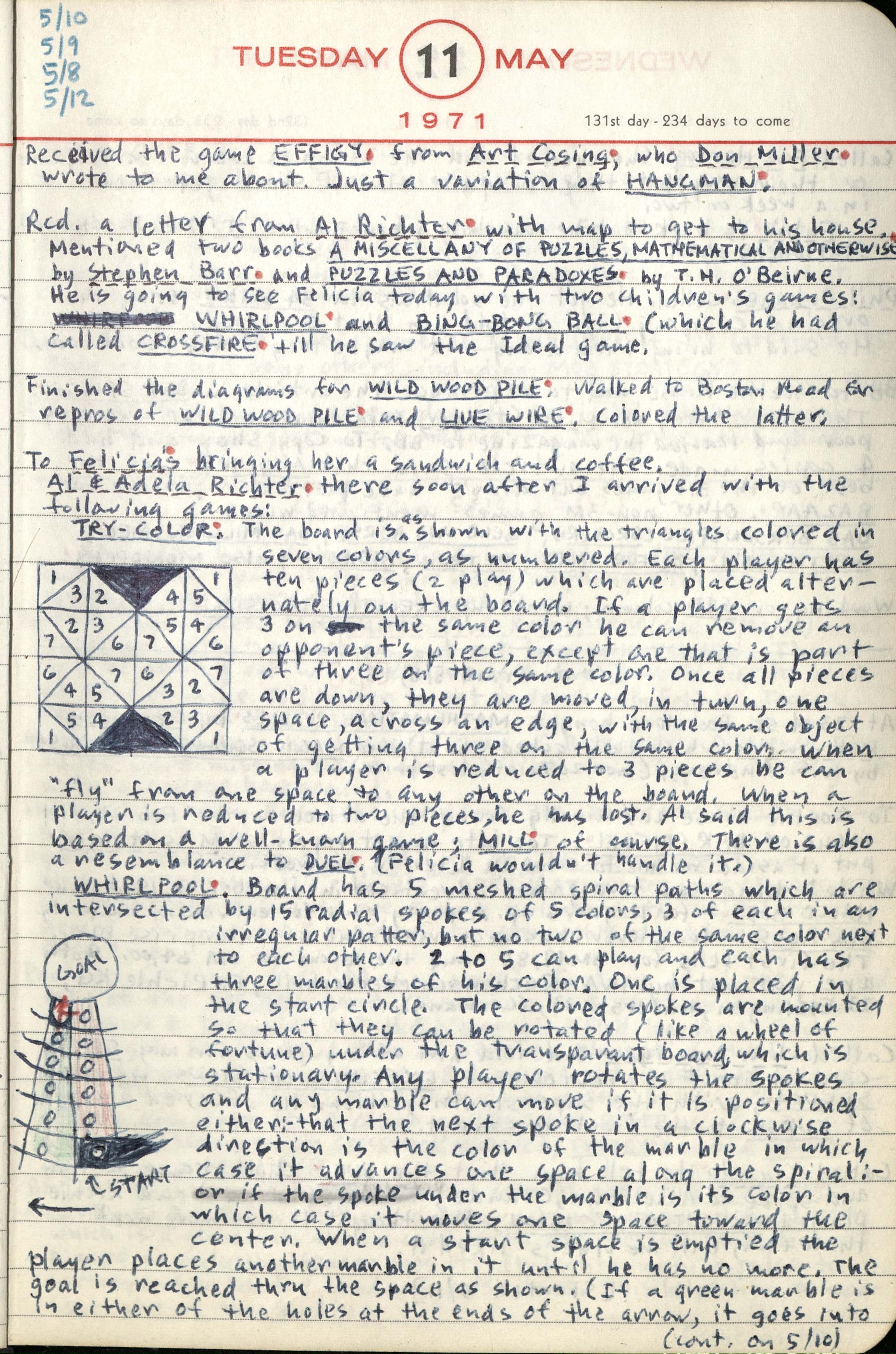1971_Sackson_151_May 11.jpg: Page #1
Original title: 1971_Sackson_151_May 11.jpg

Transcription
5/10 5/9 5/8 5/12 TUESDAY 11 MAY 1971 131st day - 234 days to come
Received the game EFFIGY from Art Cosing, who Don Miller wrote to me about. Just a variation of HANGMAN.
Rcd. a letter from Al Richter with map to get to his house. Mentioned two books A MISCELLANY OF PUZZLES, MATHEMATICAL AND OTHERWISE by Stephen Barr and PUZZLES AND PARADOXES by T.H. O'Beirne. He is going to see Felicia today with two children's games: WHIRLPOOL and BING-BONG BALL (which he had called CROSSFIRE till he saw the Ideal game.
Finished the diagrams for WILD WOOD PILE. Walked to Boston Read for repros of WILD WOOD PILE and LIVE WIRE. Colored the latter.
To Felicia's bringing her a sandwich and coffee. Al & Adela Richter there soon after I arrived with the following games: TRY-COLOR: The board is as shown with the triangles colored in
[diagram of 4 x 4 grid, each square divided in half (two right triangles). Squares are numbered. 4th and 5th triangles in top row and bottom row are shaded black and contain no numbers.]
seven colors, as numbered. Each player has ten pieces (2 play) which are placed alter- nately on the board. If a player gets 3 on the same color he can remove an opponent's piece, except one that is part of three on the same color. Once all pieces are down, they are moved, in turn, one space, across an edge, with the same object of getting three on the same color. When a player is reduced to 3 pieces he can "fly" from one space to any other on the board. When a player is reduced to two pieces, he has lost. Al said this is based on a well-known game; MILL, of course. There is also a resemblance to DUEL. (Felicia wouldn't handle it.) WHIRLPOOL. Board has 5 meshed spiral paths which are
[sketch of circle labeled "GOAL" with spokes radiating from bottom. ]
intersected by 15 radial spokes of 5 colors, 3 of each in an irregular patter, but no two of the same color next to each other. 2 to 5 can play and each has three marbles of his color. One is placed in the start circle. The colored spokes are mounted so that they can be rotated (like a wheel of fortune) under the transparant board, which is stationary. Any player rotates the spokes and any marble can move if it is positioned either:- that the next spoke in a clockwise direction is the color of the marble in which case it advances one space along the spiral:- or if the spoke under the marble is its color in which case it moves one space toward the center. When a start space is emptied the player places another marble in it until he has no more. The goal is reached thru the space as shown. (If a green marble is in either of the holes at the ends of the arrow, it goes into (cont. on 5/10)